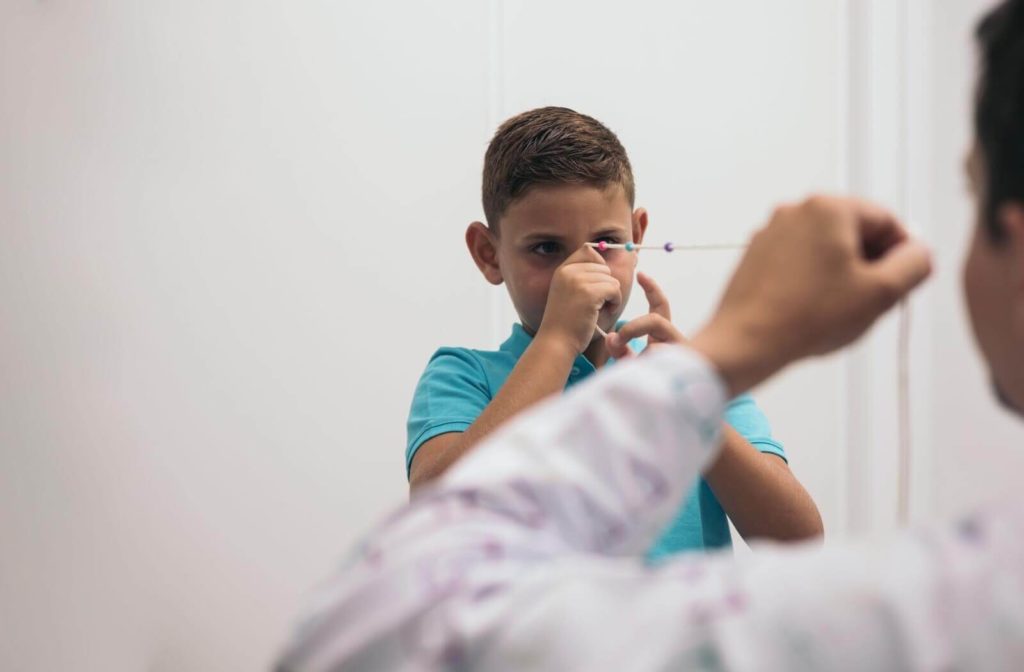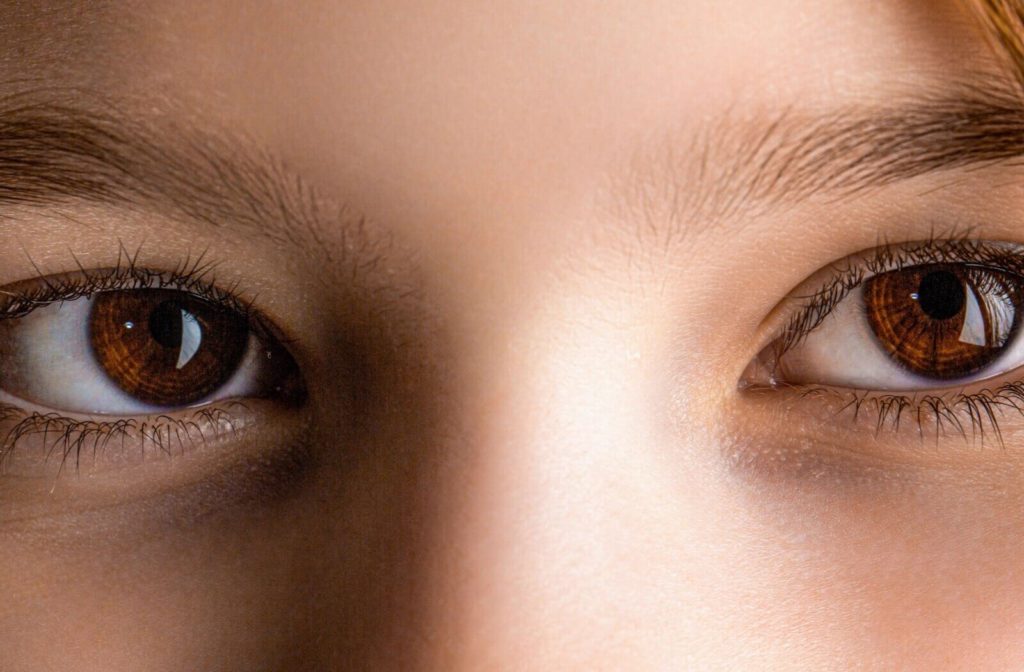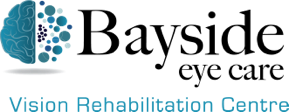Strabismus, commonly known as crossed eyes, is a condition where the eyes do not align properly, causing one or both eyes to turn in different directions. This misalignment can impact vision and depth perception, making everyday tasks more challenging.
Vision therapy is an effective, noninvasive treatment option that helps retrain the eyes and brain to work together more efficiently. By using specialized exercises and tools, vision therapy can strengthen eye muscles, improve focus, and enhance coordination.
If you or your child experience symptoms of strabismus, scheduling an eye exam can help diagnose the condition and determine if vision therapy is the right treatment option.
What Is Strabismus?
Strabismus occurs when the muscles responsible for eye movement fail to work in harmony, resulting in misalignment. The affected eye may turn:
This condition affects about 5% of the population and is often diagnosed in childhood, though it can develop at any age. Strabismus can be constant or intermittent, with symptoms varying in severity.
Causes & Risk Factors of Strabismus
Several factors contribute to the development of strabismus, including:
- A family history of strabismus increases the likelihood of developing the condition
- Weak or overactive eye muscles can prevent proper coordination
- Refractive errors like uncorrected farsightedness (hyperopia) can strain the eyes, leading to misalignment
- Some neurological conditions & brain disorders can interfere with eye muscle control
- Premature birth or low birth weight increases the risk of eye development issues
- Trauma or injuries to the eye or brain can disrupt normal alignment
How Strabismus Affects Vision
Strabismus disrupts binocular vision, the ability to use both eyes together. The brain receives conflicting images, which can lead to:
- Double vision (diplopia)
- Eye strain & headaches
- Difficulty focusing or reading
- Reduced depth perception
- Amblyopia (lazy eye)
Since early intervention is key, regular eye exams are essential to detect and manage strabismus before it worsens.

How Vision Therapy Helps Correct Strabismus
Vision therapy is a structured program designed to improve eye coordination, focus, and muscle control. Unlike glasses or surgery, which mainly address symptoms, vision therapy targets the underlying neuromuscular issues contributing to strabismus.
Key Benefits of Vision Therapy for Strabismus
- Strengthens eye muscles to improve alignment & coordination
- Enhances binocular vision by teaching the eyes to work together
- Reduces double vision & other symptoms
- Improves focusing & tracking skills for reading & everyday activities
- Supports long-term eye health by preventing further vision complications
How Vision Therapy Works
Vision therapy combines in-office treatments and at-home exercises to train the brain and eyes to function as a team. A customized program may include:
- Eye-tracking exercises to improve smooth & coordinated movements
- Prism lenses to gradually adjust eye positioning & alignment
- Patching therapy to strengthen a weaker eye by covering the dominant eye
- Computer-based programs that provide interactive visual training
- Specialized tools such as balance boards & stereoscopic charts to enhance depth perception
How Long Does Vision Therapy Take?
The duration of vision therapy varies depending on the severity of strabismus and the patient’s response to treatment. A typical program lasts 3 to 6 months, with weekly in-office sessions and daily at-home exercises.
Children often show quicker results due to their brain’s adaptability, but adults can also benefit. Consistency and commitment to the therapy plan are essential for long-term success.
Is Vision Therapy Right for You or Your Child?
While vision therapy is highly effective for many cases of strabismus, it may not be the best solution for everyone. In some cases, eye doctors combine vision therapy with:
- Corrective lenses to reduce eye strain & enhance focusing ability
- Prism glasses to realign visual perception
- Surgery for severe cases that do not respond to noninvasive treatments
A comprehensive eye exam with a trained optometrist can determine if vision therapy is the right approach for you or your child.
Maintaining Vision Therapy Progress: Tips for Long-Term Success
While vision therapy is an effective treatment for strabismus, maintaining progress requires consistency and follow-up care. Here are some key strategies to support long-term success:
- Even after completing vision therapy, continuing occasional exercises helps reinforce visual skills
- Routine check-ups allow your optometrist to monitor progress & detect any changes early
- Good lighting reduces eye strain & helps maintain visual comfort
- Limit excessive screen time & take regular breaks to prevent eye fatigue
- Staying active, like playing catch, reading, & puzzles, can naturally enhance eye coordination
By following these steps, patients can maintain their visual improvements and reduce the risk of strabismus symptoms returning.
Take the Next Step Toward Clearer Vision
Strabismus can significantly impact vision and quality of life, but early intervention can make a difference. Vision therapy offers a noninvasive, effective solution to help improve eye alignment and strengthen visual skills.
If you or your child are experiencing symptoms of strabismus, schedule a consultation with Bayside Eyecare today. Our team is dedicated to providing personalized care and treatment plans to help you achieve clearer, more comfortable vision.



